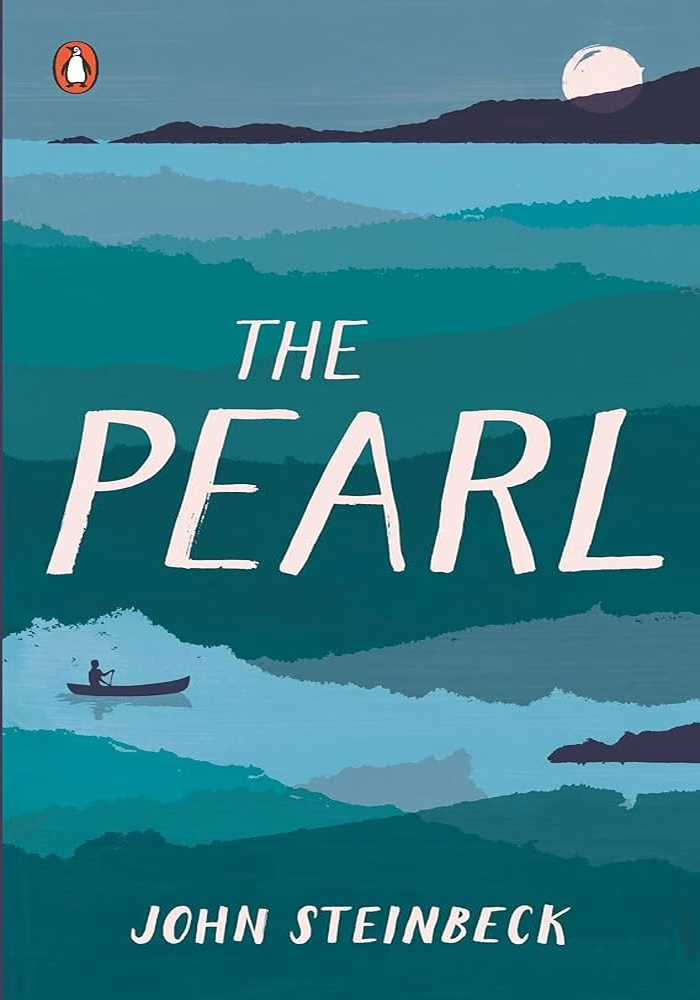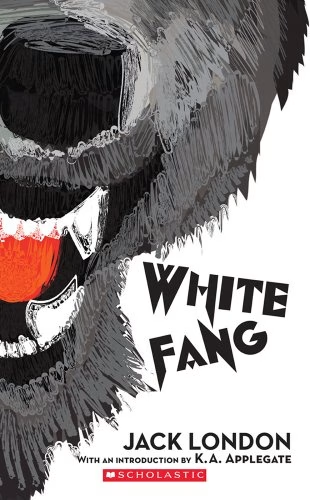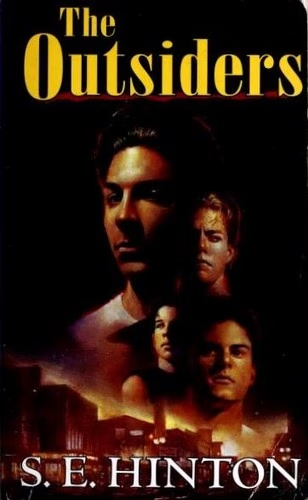Plot Summary
The Scorpion’s Sting and the Doctor’s Rejection
The story opens in a brush house in La Paz, Mexico, where Kino, a young pearl diver, his wife Juana, and their infant son Coyotito, live a simple, contented life. Their world is governed by the rhythms of nature and the deep, unspoken connection of their family, which Kino experiences as the “Song of the Family.” This tranquil existence is shattered when a scorpion crawls down the rope of Coyotito’s hanging box and stings him.
Juana immediately sucks the poison from the wound, but fears for her son’s life. Against the quiet resignation of their neighbors, she insists they see the town’s doctor. This is a monumental decision, as the doctor is a wealthy, racist man who represents the colonial class that has oppressed Kino’s people for centuries. The family, followed by a procession of neighbors, walks from their impoverished village to the doctor’s grand house in the city of stone.
As Kino stands at the gate, he is filled with a mixture of rage and fear. The doctor’s servant, one of Kino’s own people, refuses to speak their native language and acts as a barrier. The doctor, lounging in luxury, contemptuously dismisses the request, saying, “Have I nothing better to do than cure insect bites for ‘little Indians’?” When he learns they have no money—only eight small, worthless seed pearls—he has his servant lie that he has been called away. The public shaming is profound. In a moment of helpless fury, Kino smashes his fist against the doctor’s iron gate, bloodying his knuckles.
The Pearl of the World
Humiliated and desperate, Kino and Juana take to the sea in Kino’s canoe, his most prized possession and a legacy from his grandfather. While Juana applies a seaweed poultice to Coyotito’s swollen shoulder and prays for a miracle, Kino dives for oysters. He feels the “Song of the Pearl That Might Be” rise within him, a melody of hope against the odds.
In the depths, he discovers a gigantic oyster, unlike any he has ever seen. Prying it open in the canoe, he finds a magnificent pearl, “perfect as the moon… as large as a sea-gull’s egg.” It is the Pearl of the World. The discovery is so overwhelming that Kino howls with triumph. At that same moment, Juana checks on Coyotito and finds that the swelling has miraculously receded. The pearl seems to be a divine gift.
The news of Kino’s find travels through the town with supernatural speed, igniting the greed and envy of all who hear it. The priest thinks of church repairs, the shopkeepers of unsold clothes, and the beggars of generous alms. The doctor, hearing the news, falsely claims Kino as a client and dreams of returning to a life of luxury in Paris. The town’s collective desire begins to surround Kino like a poison, and he, unknowingly, becomes “every man’s enemy.”
Dreams and the Encroaching Darkness
That afternoon, Kino’s hut is filled with neighbors as he articulates his dreams for the future, dreams made possible by the pearl. He sees visions in its lustrous surface:
* A proper church wedding for him and Juana.
* New clothes and, for the first time, shoes for his family.
* A Winchester rifle for himself.
* Most importantly, an education for Coyotito. His son will learn to read and write, and through this knowledge, he will set their people free from ignorance and exploitation.
The proclamation of these dreams is a revolutionary act, a defiance of the established social order. But as hope fills the house, so does a creeping evil. The priest visits, subtly reminding Kino of his obligations to the church. Later, the doctor arrives, feigning concern for Coyotito. He deceitfully convinces Kino that the poison’s effects are delayed and gives the baby a capsule of white powder that soon makes him violently ill. He then returns to administer an “antidote,” using the visits as an opportunity to search for the pearl’s hiding place.
That night, the darkness proves tangible. An intruder enters the hut to steal the pearl. Kino attacks the thief and is struck on the head, left bleeding in the dark. The event terrifies Juana. “This pearl is like a sin! It will destroy us,” she cries, begging him to throw it away. But Kino is resolute. The pearl has become intertwined with his identity and his son’s future. “I am a man,” he declares, refusing to be cheated of his one chance.
The Collusion of the Pearl Buyers
The next morning, Kino and his family, followed by the entire village, march to the pearl buyers’ offices to sell their treasure. His brother, Juan Tomás, warns him of the buyers’ corrupt system. For years, the buyers, who pretend to be competitors, have secretly worked for a single master, colluding to keep prices low and exploit the fishermen.
Kino enters the first dealer’s office and unveils the great pearl. The buyer, an expert in feigning indifference, expertly conceals his shock. He dismisses the magnificent pearl as a “curiosity,” a “monstrosity” that is too large to have any real value, and offers a paltry one thousand pesos. Kino, enraged, insists it is worth fifty thousand. To prove there is “no collusion,” the dealer summons the other buyers. They, too, belittle the pearl, calling it chalky and comparing it to paste. The highest offer they make is a fraction of its true worth.
Realizing he is being cheated by an unbreakable cartel, Kino snatches the pearl back. “My pearl is not for sale here,” he declares fiercely. “I will go, perhaps even to the capital.” He has defied the entire power structure of the town, and in doing so, has sealed his fate.
Violence and Inescapable Flight
The community is divided. Some see Kino as a fool for refusing the money, while others see him as a hero. That night, Kino is attacked again outside his hut. The fight is brutal, and Kino is left bruised and bloodied.
Juana, now certain the pearl is a curse that will lead to their destruction, makes a desperate decision. Before dawn, she steals the pearl and creeps toward the shore to throw it back into the sea. Kino awakens, pursues her, and catches her just as she is about to throw it. In a blind rage, he wrenches the pearl from her, strikes her in the face, and kicks her.
As he walks back, he is ambushed by more dark figures. In the ensuing struggle, he draws his knife and kills one of his attackers. Juana, recovering, finds him dazed beside the dead man. The line has been crossed; their old life is gone forever. They must flee.
Their escape is systematically cut off. They find a great hole smashed in the bottom of Kino’s canoe—an act Kino considers worse than murder, as a boat cannot heal or have sons. Rushing back to their home, they see it engulfed in flames. They have lost everything. They take refuge with Juan Tomás and his wife, Apolonia. That night, under the cover of a fierce wind that will erase their tracks, they flee north toward the distant mountains.
The Hunt and the Final Tragedy
Kino, Juana, and Coyotito journey through the desolate wilderness. The “Song of the Pearl” in Kino’s mind has become sinister, interwoven with the “Song of Evil.” Soon, Kino realizes they are being pursued by three expert trackers: two on foot and one on horseback, armed with a rifle.
A desperate, panicked flight begins. Kino uses all his knowledge of the land to try and throw the hunters off their trail, leading his family up into the rocky, waterless mountains. Exhausted, they find a small cave near a stream, a rare source of water, and hide. The trackers, relentless, follow them to the spring and make camp directly below the cave.
Kino knows they will be found in the morning. Trapped, he decides his only chance is to attack the trackers in the dark, before the moon rises. He strips off his white clothes, takes his great knife, and silently creeps down the mountain face. As he prepares to leap, Coyotito lets out a small cry from the cave. The trackers hear it. One dismisses it as a coyote pup, but another raises his rifle. “If it’s a coyote, this will stop it,” he says, and fires into the darkness toward the cave.
At the sound of the gunshot, Kino leaps, a “terrible machine” of vengeance. He kills the man with the rifle, then the other two in a swift, brutal onslaught. But as the silence of the night returns, it is broken by a “keening, moaning, rising hysterical cry of death” from the cave. The rifle shot found its mark, and Coyotito is dead.
The Return
The story concludes with Kino and Juana’s return to La Paz. They walk not in single file as was custom, but side by side, equals in their monumental grief. They are transformed, remote and wrapped in a “magical protection” of sorrow that makes the villagers shrink away from them. They carry Coyotito’s body in a blood-stained sling.
They walk past the ashes of their home and the wreckage of their canoe without a glance, continuing to the shore. There, Kino takes out the great pearl one last time. He looks into its surface and sees only visions of evil: the man he killed, Juana’s beaten face, and Coyotito’s body with the top of his head shot away. The pearl is now “gray and ulcerous,” a malignant growth.
He holds the pearl out to Juana, offering her the chance to throw it away. “No, you,” she says softly. With all his might, Kino hurls the pearl back into the sea. They watch it wink in the sunset, splash into the water, and sink to the bottom, where it is quickly lost in the sand. The music of the pearl finally drifts to a whisper and disappears.
Characters
Kino
The protagonist of the story, Kino is a young, impoverished pearl diver who is, at the outset, a man at peace with his world. He is deeply connected to his wife, Juana, his son, Coyotito, and the natural rhythms of life by the sea, a harmony he internalizes as the “Song of the Family.” The discovery of the great pearl awakens a fierce ambition within him. It represents not just wealth, but a chance to break the chains of colonial oppression and ignorance for his son and his people. However, this dream quickly becomes an obsession. As the world’s greed converges on him, Kino becomes increasingly isolated, paranoid, and violent. He transforms from a loving husband into a man who beats his wife, from a peaceful diver into a killer. The pearl, which he claims has become his “soul,” ultimately costs him his humanity and his son. His final act of throwing the pearl back into the sea is not a victory, but a tragic acknowledgment of his profound loss.
Juana
Kino’s wife, Juana is a figure of quiet strength, wisdom, and resilience. She is portrayed as more intuitive and practical than her husband. While Kino is captivated by the dreams the pearl offers, Juana is the first to sense its inherent evil, recognizing it as a “sin” that will destroy them. Her wisdom is a blend of traditional native beliefs (“ancient magic”) and adopted Catholicism (“Hail Marys”). She is fiercely protective of her family, and her loyalty to Kino is absolute, even when he becomes monstrous. Though she is a submissive wife in a patriarchal culture, she possesses an inner strength that allows her to challenge Kino’s obsession and endure his violence. In the end, when they return to La Paz, they walk side by side, signifying that their shared tragedy has made them equals.
Coyotito
Kino and Juana’s infant son. Coyotito is a symbol of innocence, hope, and the future. His scorpion sting serves as the catalyst for the entire plot, driving Kino’s desperate search for a pearl to pay the doctor. All of Kino’s ambitions are projected onto his son, whom he envisions as a liberator for their people through education. Coyotito’s vulnerability throughout the story—from the scorpion’s poison to the doctor’s medicine—is a constant source of tension. His senseless death at the hands of the trackers is the ultimate, tragic price of Kino’s pursuit of the pearl, shattering all his dreams and exposing the destructive nature of his ambition.
Juan Tomás
Kino’s older brother, Juan Tomás is the voice of caution and reason. He understands the rigid, oppressive social structure in which they live and recognizes the immense danger Kino invites by defying the pearl buyers. He represents the collective wisdom of the village—a wisdom born of centuries of subjugation, which advises caution and acceptance of one’s place. Despite his warnings and his fear, his loyalty to his brother is unwavering. He is the only person Kino and Juana can turn to, providing them with shelter and supplies before they flee, embodying the importance of family in the face of societal evil.
The Doctor
The doctor is a primary antagonist and a potent symbol of colonial greed, corruption, and racism. He lives in luxury, callously exploiting the native people he holds in contempt. He refuses to treat Coyotito when he believes the family is poor, but once he hears of the pearl, his avarice is ignited. He uses his position of authority and medical knowledge to manipulate Kino, poisoning and then “curing” the baby simply to gain an advantage in finding the pearl. He represents the corrupting influence of wealth and the deep-seated injustice of the social hierarchy.
Core Themes
Greed as a Destructive Force
This is the central theme of the novella. The pearl, a beautiful and neutral object from nature, acts as a catalyst that exposes the latent greed in every level of society. It transforms the “Song of the Family” into the “Song of Evil.” For Kino, the desire for a better life quickly curdles into a destructive obsession that blinds him to the warnings of his wife and the escalating danger. For the townspeople, the pearl incites envy and schemes. For the doctor and the pearl buyers, it fuels their existing avarice and corruption. The story functions as a powerful warning that the pursuit of material wealth can corrupt the human spirit, destroy families, and lead to ruin.
Social Oppression and Colonialism
The Pearl is a sharp critique of a racist and exploitative social system. The story starkly contrasts the simple, impoverished life of the native fishermen with the decadent, cruel existence of the colonial class (the doctor, the priest, the buyers). Kino’s people have been “beaten and starved and robbed and despised” for 400 years, leaving them trapped in a cycle of poverty and ignorance. Kino’s dream of an education for Coyotito is a revolutionary desire for liberation from this system. However, the system’s agents—the cheating pearl buyers, the manipulative doctor—unite to crush his ambition, demonstrating that the structure is designed to prevent anyone from the lower class from rising.
The Illusion of Wealth
The pearl symbolizes the promise of upward mobility and the seductive idea that wealth can solve all problems. Kino believes the pearl’s fortune will bring him security, respect, freedom, and happiness. The narrative tragically demonstrates this to be an illusion. Instead of happiness, the pearl brings paranoia, violence, and death. Instead of freedom, it leads to a desperate flight and the loss of everything Kino valued: his home, his canoe (his livelihood), his peace of mind, and ultimately, his son. The story suggests that true value lies not in material possessions but in family, community, and a spiritual connection to the world—the very things Kino possesses at the beginning and loses in his quest for wealth.
Fate vs. Free Will
The story constantly questions whether Kino is a victim of a malevolent fate or the agent of his own destruction. The narrative is steeped in a sense of inevitability, from the scorpion’s random sting to the pearl’s discovery. Juana and Juan Tomás repeatedly warn that Kino is challenging the way things are, suggesting that he is defying a pre-ordained order. However, Kino makes conscious choices: he refuses to sell the pearl, he continues his quest despite the clear danger, and he gives in to violence. The novella suggests that while external forces of fate and societal oppression are powerful, human choices, driven by pride and ambition, are what ultimately steer the course toward tragedy.
Plot devices
Parable
Steinbeck explicitly frames The Pearl as a parable. The opening lines state, “If this story is a parable, perhaps everyone takes his own meaning from it and reads his own life into it.” This signals that the story should be read on a symbolic level. The characters are not meant to be psychologically complex individuals but rather archetypes: Kino is Everyman, Juana is the voice of wisdom, the doctor is Greed, and the pearl is the object of destructive desire. The simple, linear plot and clear moral message about the evils of materialism are characteristic of the parable form.
Symbolism
The story is rich with symbolism that elevates its simple narrative into a profound commentary on human nature.
* The Pearl: The central symbol, its meaning evolves throughout the story. Initially, it represents divine providence, hope, and fortune. It quickly becomes a symbol of human greed, evil, ambition, and the corrupting nature of wealth. By the end, it is a “gray, ulcerous” reminder of death and loss.
* The Scorpion: The scorpion symbolizes the arbitrary, malevolent forces of the world that can inflict pain and suffering without reason. Its appearance marks the intrusion of evil into the family’s idyllic life and sets the tragic events in motion.
* The Canoe: More than just a boat, the canoe symbolizes Kino’s heritage and connection to his ancestors. It is his source of livelihood and his link to tradition. Its destruction signifies the complete severing of Kino’s ties to his old life and peaceful existence.
Foreshadowing
A sense of impending doom permeates the novella from the moment the pearl is found. This is achieved through several devices:
* Juana’s repeated insistence that the pearl is evil and her premonitions of disaster.
* Juan Tomás’s warnings about defying the established social structure.
* Most powerfully, the “Song of Evil,” a musical motif that arises in Kino’s mind whenever danger is near, serving as a constant, ominous warning of the encroaching darkness.
The “Songs” as a Narrative Device
Steinbeck uses a unique, lyrical device by describing the world through the “songs” in Kino’s head. These internal melodies function as a barometer of his emotional and spiritual state. The “Song of the Family” represents peace, love, and contentment. The “Song of the Pearl That Might Be” embodies hope and ambition. This later merges with the triumphant and then the insane “music of the pearl.” In stark contrast, the “Song of Evil” is the music of the enemy, signaling the presence of greed, danger, and corruption. The struggle for dominance between these songs mirrors Kino’s internal conflict and charts his descent into paranoia and violence.





